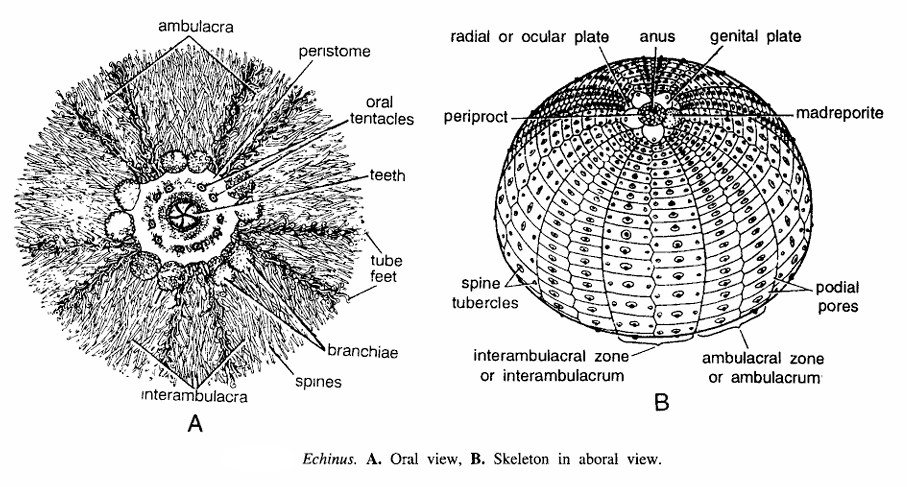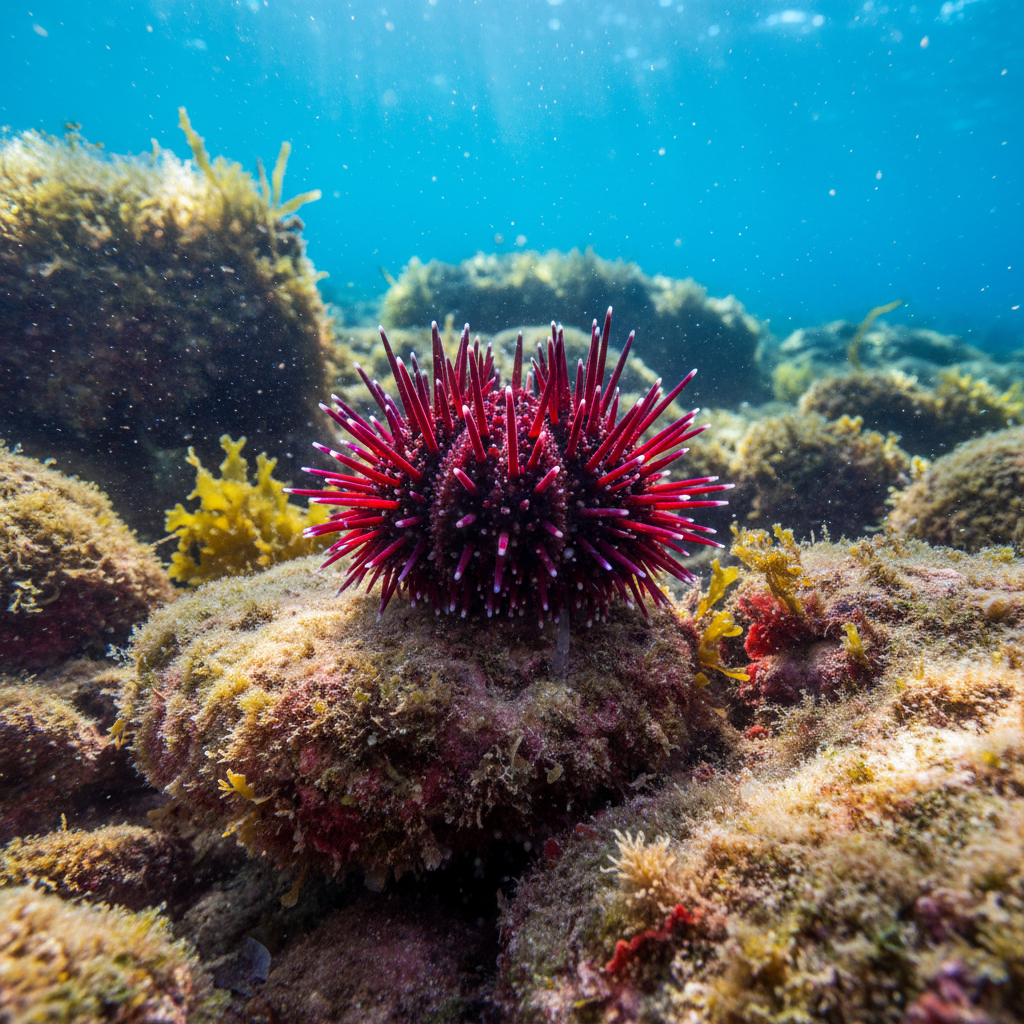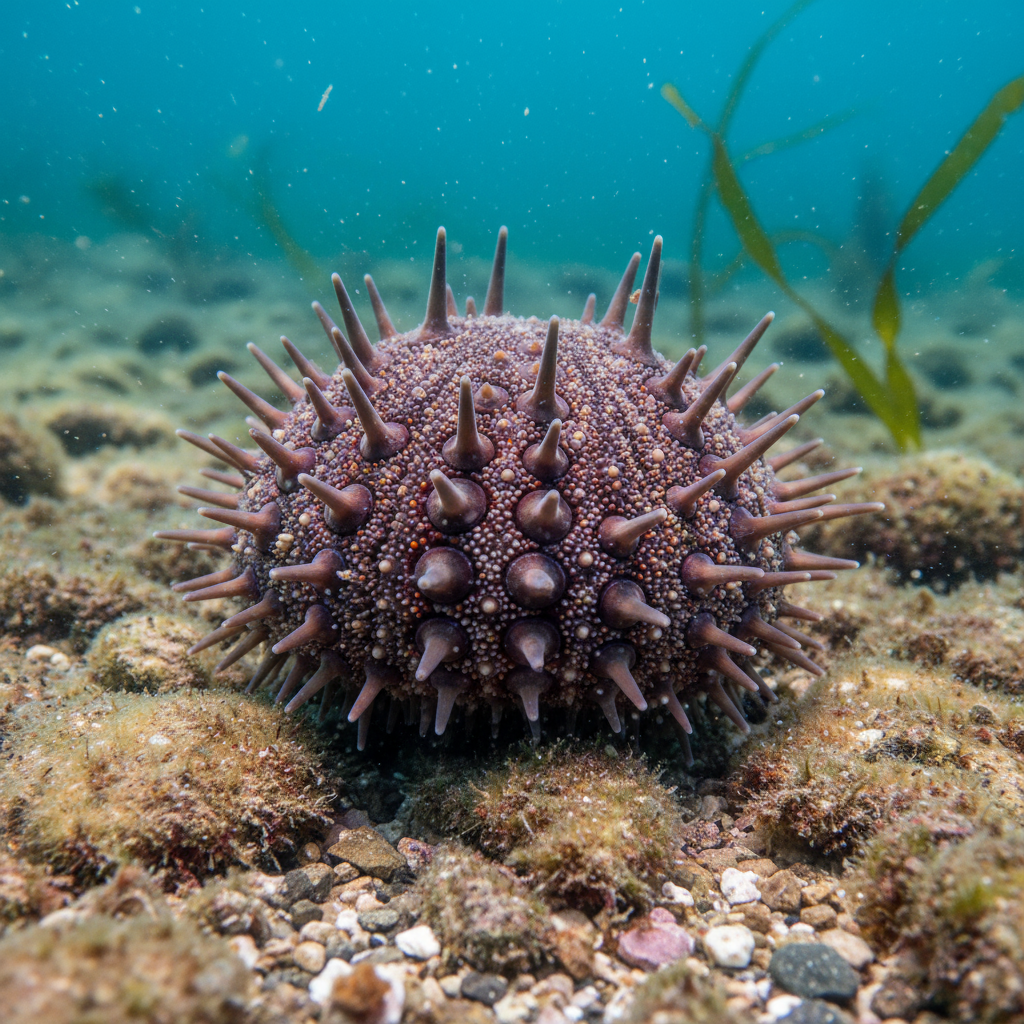Echinus: A Comprehensive Overview of the Common Sea Urchin
Echinus is a genus of sea urchins notable for their globular, spiny bodies and ecological importance in marine environments. These echinoderms belong to the family Echinidae, within the class Echinoidea, phylum Echinodermata. Sea urchins in the genus Echinus are distributed widely in coastal waters and are recognized for their role in grazing algae, influencing marine biodiversity, and contributing to the stability of underwater ecosystems. The species Echinus esculentus, commonly known as the European edible sea urchin or common sea urchin, is among the well-studied representatives of this genus.
Classification of Echinus
| Taxonomic Rank | Name | Characteristic |
|---|---|---|
| Kingdom | Animalia | Multicellular, heterotrophic marine organisms |
| Phylum | Echinodermata | Marine animals with radial symmetry and calcareous endoskeletons |
| Class | Echinoidea | Sea urchins characterized by globular shape and spines |
| Order | Camarodonta | Sea urchins with specialized jaw structures |
| Family | Echinidae | Sea urchins with spiny, rigid tests |
| Genus | Echinus | Globular sea urchins with movable spines |

Habitat and Habit
Sea urchins of the genus Echinus occupy a variety of coastal marine habitats, often found on rocky substrates, kelp forests, and coral reefs. They are benthic organisms living on the sea floor, from shallow tide pools to depths up to 1,200 meters. Echinus esculentus, for instance, is common throughout northern European waters, living primarily on hard bottoms where it grazes on algae and encrusting organisms.
These sea urchins are usually slow-moving but have powerful spines that help them anchor onto substrates and provide defense against predators. Their grazing behavior directly impacts the distribution of algal communities and coral reef health.
Geographical Distribution
Echinus species are distributed widely in the Atlantic Ocean, particularly around the coasts of Western Europe, including the North Sea, English Channel, and areas ranging from Norway to Portugal. They are commonly found along rocky shores and kelp-dominated habitats in temperate waters.

General Characteristics
- Commonly called as sea urchin
- Body is spherical and brownish and is differentiated into flat, oral and domed aboral surfaces along vertical oral aboral axis.
- Body is enclosed in a rigid globular test or corona which is composed of calcareous plates which regularly interlock to form test.
- Entire surface, except peristome and periproct, is covered by movable articulated spines to the test.
- Pedicellariae and sphaeridia, offensive and defensive organs are found between movable articulated spines.
- The oral surface contains mouth, from where jaw apparatus or Aristotle’s lantern or masticatory apparatus protrudes internally.
- The mouth is surrounded by a lip or peristome.
- The inside of peristome contains calcareous ossicles and buccal tube and on outer edge of peristome are ten branching gills.
- Test is distinguished into ambulacral and inter-ambulacral zones. Water vascular system is well developed.
- Ambulacral groove closed. Test bears numerous spines and rows of tube feet in ambulacral areas.
- Dried test contains ocular plates, anus, genital plate, madreporite plate and double row of podia.
- Madreporite and gonophore are present near anus and aboral in position.
- Tube feet end in suckers and form five double meridional rows.
- Body Shape: Nearly spherical or slightly flattened at the poles.
- Test: Hard, calcareous shell covered in spines; covered by tubercles to which spines articulate.
- Spines: Numerous, blunt-ended, and generally around 1 to 1.5 cm long. Color ranges vary from reddish and purplish hues to white-tipped spines.
- Mouth: Located on the underside with a specialized jaw apparatus called Aristotle’s lantern for rasping algae.
- Tube Feet: Extend through ambulacral plates, aiding in locomotion and respiration.
- Size: Can reach up to 16-17 cm in diameter in mature specimens.
Special Features
The mouth on lower surface is surrounded by a lip or peristome. In side of peristome contains calcareous ossicles and buccal tube and on outer edge of peristome are ten branching gills. The most interesting part is Aristotle’s lantern. It is a masticatory apparatus which protrudes internally. Sea urchin’s eggs have been extensively used for experimental work in embryology.
The genus Echinus notably possesses a jaw structure termed Aristotle’s lantern, which allows effective grazing on algae and sessile invertebrates. Their pedicellariae, specialized pincer-like structures, serve defensive and cleaning functions on the body surface.
Echinus sea urchins have a sophisticated nervous system with nerve rings and radial nerves that innervate spines and tube feet, allowing sensory functions such as touch and chemical detection. Their ability to move their spines provides protection and environmental interaction.

Behavior and Ecology
Echinus sea urchins are primarily grazers, feeding on algae such as kelp and other encrusting organisms. By controlling algal growth, they play a crucial role in the maintenance of coral reefs and rocky marine ecosystems. Their grazing activity can create ‘urchin barrens’ where algal overgrowth is naturally limited.
Reproductively, Echinus species are dioecious, releasing gametes into the water column for external fertilization. Larvae develop planktonically for several weeks before settling on the sea floor and metamorphosing into juvenile urchins.
Predators include various fish, sea otters, crabs, and humans, who also harvest some species for their edible roe in commercial fisheries.
References
- https://en.wikipedia.org/wiki/Echinus_(echinoderm)
- https://www.marlin.ac.uk/species/detail/1311
- https://en.wikipedia.org/wiki/Echinus_esculentus
- https://www.european-marine-life.org/30/echinus-esculentus.php
- https://www.habitas.org.uk/marinelife/species.asp?item=ZB3620
- https://www.greatfen.org.uk/wildlife-explorer/marine/starfish-and-sea-urchins/edible-sea-urchin
- https://www.britannica.com/animal/sea-urchin
- https://www.bgs.ac.uk/discovering-geology/fossils-and-geological-time/echinoids/
- https://animaldiversity.org/accounts/Echinodermata/
- https://www.sciencedirect.com/topics/agricultural-and-biological-sciences/echinus


Pingback: Strongylocentrotus | Zoologyverse | 2025